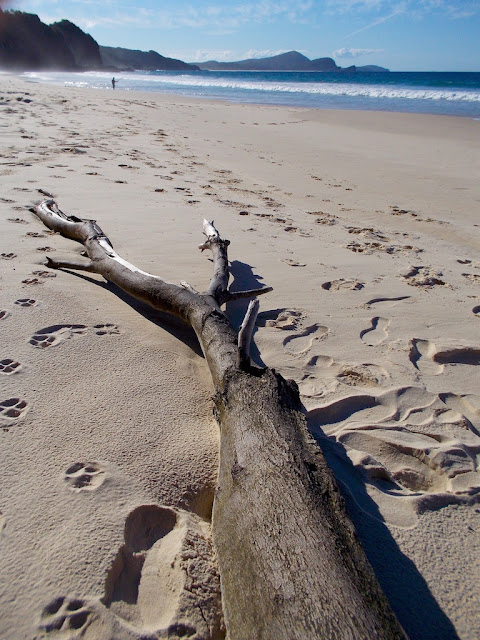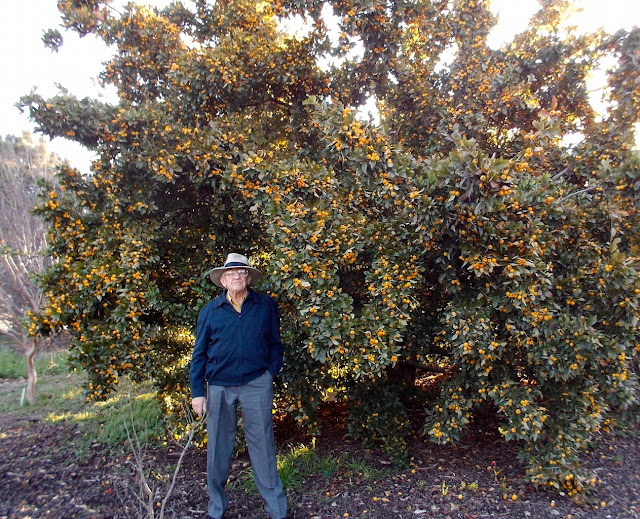A new grandson lured us to Australia in winter - the worst time to visit because Australian houses are designed for the other three seasons of the year, i.e. drafty, with no insulation and no central heating. So it might be a reasonable 12ºC outside, but it's not any warmer inside. At night the temperature in Sydney can be close to freezing point, both outside the house and in.
The plane took a wide sweep south of the city, coming in over Botany Bay and Greenhills beach.
The weather was cool and rainy during the first week, cool and sunny for the remainder of the month. We spent most of our time getting acquainted with the adorable baby and visiting other family, but we did make a couple of forays into the city and also out into the countryside to visit friends further away.
As always, we went to see what was on display at the excellent, and free, NSW Art Gallery. Returning across the vast park called the Domain gave us a rather gloomy view of the city skyline and some of its dramatic architecture.
In the Domain itself, the architecture of the Moreton Bay fig trees was equally impressive.
Our travels outside Sydney took us to the city of Orange on the western plains, where our friends took us to the local botanical garden.
There was little in flower, but several shrubs were producing vivid fruits. I was impressed with the size of a Mexican thorn (Crataegus stipulacea).
From Orange we headed north and east towards the coast again through picturesque small towns like Gulgong...
... and beautiful rolling countryside dotted with sheep and eucalyptus trees.
We were heading for Seal Rocks, a lovely beach that we'd visited a number of years ago. At this time of year it was almost deserted, except for a surf fisherman and his dog ...

... and some inquisitive pelicans.
At the southern end of the beach are the rocks.
On our way south along the coast back to Sydney, we made a quick visit to Catherine Hill Bay, the site of an old coal mining operation established in 1873. The wharf from which coal was shipped still stands.
Once again the beach was deserted save for a lone fisherman. In the distance freighters wait offshore to dock at nearby Newcastle, still a centre for coal exports.
I was intrigued by the rockpools in this area, which looked like the inspiration for some of the local aboriginal art. The patterns in the sand are made by small shells as their occupants move about the terrain of their watery world.
During our last week in Sydney, we visited our artist friend Roland and George the cat, who passed from us to Roland when we left the country.
Outside Roland's window were a dramatic pair of the ever-present eucalyptus trees of Australia.
A last visit to another beach in the Sydney suburb of Collaroy offered a sunset view of another Australian native tree, a Norfolk Island pine (Araucaria heterophylla). It is not a true pine but a close relative of the monkey puzzle tree of South America. Found only on a small island off the Australian coast, it has been distributed all over the world, growing outside in subtropical zones and as a houseplant in cooler ones.
In the landscaped approach to the beach were other Australian plants - a Banksia
...and a Grevillea.




















